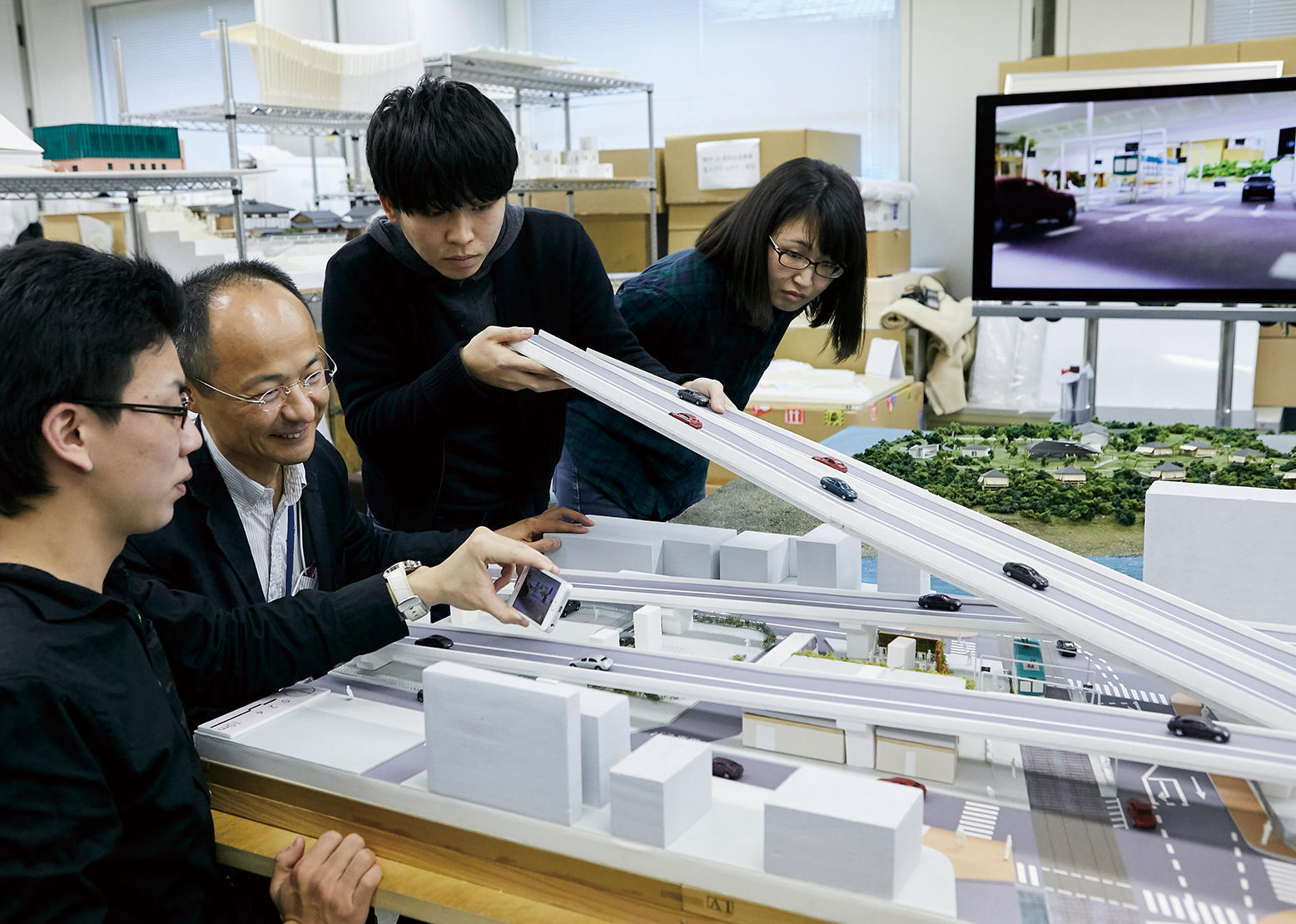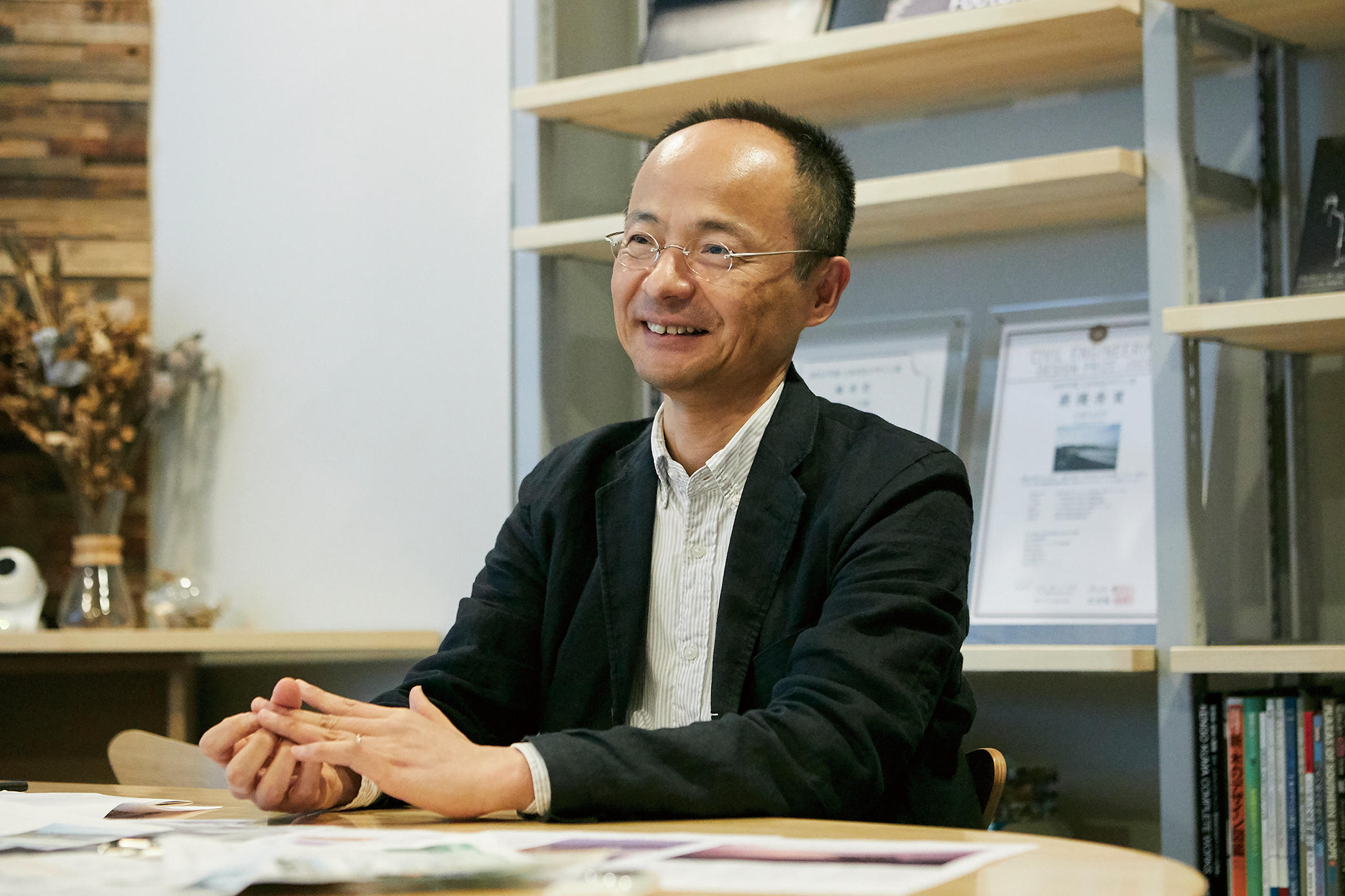- TOP
- Cutting-edge Research and Social Contribution
- Cutting-edge Research
- Combining civil engineering with architecture and design to create a landscape that will be loved for a long time

Combining civil engineering with architecture and design to create a landscape that will be loved for a long time

Unrivaled landscape design created through a synergy of civil engineering and architecture
Professor Shigeyama has designed civil engineering structures in various locations in Japan. For example, he was involved in the design of Kishi Park in Matsue City, Shimane Prefecture, a scenic spot well known as a place to watch the sunset on Lake Shinji. He created a venue there for interaction between three main entities: the country, the prefecture, and the city in an integrated space. The result is a pleasant waterfront for citizens and tourists.
Prof. Shigeyama said, "A key of civil engineering design is to act with consideration of the surrounding landscape. In the case of Kishi Park, it was possible to create a single unified landscape by combining a wide range of environmental elements, including buildings, the park, water surfaces, mountains and sunset."
The Shimane Prefectural Art Museum is adjacent to the park. In order to make Kishi Park a space connecting the museum and Lake Shinji, Prof. Shigeyama devised a bridging structure using a gentle grass bank to create a feeling of being close to the lake. The museum garden, with its view of the lake, has various design elements serving together as a flood control system. This is the ideal form of civil engineering design, a combination of form and function.
"That space was realized through interaction between civil engineering and architecture," explains Prof. Shigeyama. Civil engineering and architecture can work together to create an optimum space. In fact, that is the aim of KUT's Architecture and Infrastructure Systems program, where students can study both civil engineering and architecture.

The best landscape for a place: The starting point of civil engineering design
In 2015, Prof. Shigeyama designed the flood gate for the Tenjin River water system, as a new creation for Kishi Park. There was a need to incorporate flood control functionality in good aesthetic design of a lakeside scene representative of the characteristics of Matsue, a water capital.
To meet those requirements, Prof. Shigeyama worked to achieve a harmonious design. So that the gate would not intrude on the landscape, he adopted a configuration which did not require high gates or tall gateposts. The resulting design allows closure of the gate when the lake water is high, to prevent flood damage in the city area--while at the same time the view of the surrounding area is almost the same as before the construction.
Prof. Shigeyama continues, "When designing civil engineering structures, I always think hard to identify the most important elements of the place. With Kishi Park and the Tenjin River flood gate, I thought it was important to all people to see the beautiful sunset from a comfortable viewing area. Working from that concept, we could arrive at the most suitable design for the place."
A control bridge for inspection and maintenance was installed parallel to the flood gate. It effectively softens the presence of the gate, and it also functions as a footbridge connecting the two adjacent parks, allowing pedestrians to enjoy the lake landscape from closer up than before.
In addition, the sluice operations room was installed in the adjacent Shiragata Park so as not to disturb the landscape. It was created in the shape of a square gazebo with a veranda where visitors can sit and appreciate the sunset. It serves well as a resting place.
Furthermore, in order to reduce the sense of heavy pressure in the flood gate itself, Prof. Shigeyama adopted a chipped finish for the surface of the concrete structure, giving it a refined and soft appearance. That finish is popular in domestic construction work, but it is rare in civil engineering structures. Moreover, some ingenious details were included in the design: the weir columns in the central part were made as inclined shapes, and the control bridge fence posts were made thin, so as to make those elements inconspicuous, and to optimize harmony with the surrounding landscape.
As the saying goes, "God is in the details." Since this area is particularly sophisticated in the city of Matsue, it is necessary to pay attention to the details even though it is a flood gate, which would usually look utilitarian. Prof. Shigeyama tried to give a sophisticated air to the sluice and minimize the presence of elements that people might find unnatural.
Prof. Shigeyama's style, based on civil engineering, incorporates architectural and design perspectives in the creation of the form of civil engineering structures. There are not so many designers who can see civil engineering and architecture in an integrated fashion, but Prof. Shigeyama says, "We can create landscapes that are enduringly impressive for people if we think with a combination of civil engineering and architecture wisdom."
"Design in civil engineering is significant because those creations stay in place for a long time and they figure strongly in people's lives. My ideal is to create a civil engineering structure that people will appreciate as a cultural heritage, through a combination of civil engineering, architecture and design."

